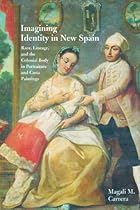

National Abjection explores the vexed relationship between "Asian Americanness" and "Americannessrdquo; through a focus on drama and performance art. Karen Shimakawa argues that the forms of Asian Americanness that appear in U.S. culture are a function of national abjectionmdash;a process that demands that Americanness be defined by the exclusion of Asian Americans; who are either cast as symbolic foreigners incapable of integration or Americanization or distorted into an ldquo;honoraryrdquo; whiteness. She examines how Asian Americans become culturally visible on and off stage; revealing the ways Asian American theater companies and artists respond to the cultural implications of this abjection.Shimakawa looks at the origins of Asian American theater; particularly through the memories of some of its pioneers. Her examination of the emergence of Asian American theater companies illuminates their strategies for countering the stereotypes of Asian Americans and the lack of visibility of Asian American performers within the theater world. She shows how some playsmdash;Wakako Yamauchirsquo;s 12-1-A; Frank Chinrsquo;s Chickencoop Chinaman; and The Year of the Dragonmdash;have both directly and indirectly addressed the displacement of Asian Americans. She analyzes works attempting to negate the process of abjectionmdash;such as the 1988 Broadway production of M. Butterfly as well as Miss Saigon; a mainstream production that enacted the process of cultural displacement both onstage and off. Finally; Shimakawa considers Asian Americanness in the context of globalization by meditating on the work of Ping Chong; particularly his East-West Quartet.
#1598192 in eBooks 2010-01-01 2010-01-01File Name: B00EENKPL8
Review
2 of 2 people found the following review helpful. Amazingly Well Researched BookBy T-Rex 5The author did an incredible amount of research; starting in the 1950s/1960s when he was able to interview several first-hand witnesses. The book details a sadly forgotten part of history; the largest theater fire disaster in the US (indeed of any fire in the US; until 9/11.) Around 600 people died in the span of 15 minutes. The author gives individual stories on several of the people who were in the theater at the time of the fire (some who survived; some who didnt.) He gives a history on firefighting in 1903 and the firefighters response to the fire. He talks about the societal happenings that caused the opening of the theater to be delayed; which led to the owners opening it before it was actually finished. He gives information on how the theater claimed to be "absolutely fireproof"; even though many of the fire-proofing mechanisms which had been planned were never actually implemented or finished. Sadly; he talks about the several people who realized the danger of the Iroquois Theatre before it was opened; but it was opened anyway. The book is very well written; especially for a first time book author. Anyone interested in history; firefighting; government corruption; safety; architecture or theatre should find this tragic story both fascinating and a cautionary tale. Most sadly; the author has an Epilogue at the end of the book written in November 2002; detailing the reasons why he doesnt believe theaters today are any safer than the Iroquois Theatre was; and that such a tragedy could happen again (which it did in February 2003.)3 of 3 people found the following review helpful. with some great photos. This is one of those nonfiction accounts ...By R. J RidleyWell written and researched; with some great photos. This is one of those nonfiction accounts that has you uneasily eyeing the exits in buildings; wondering if you would make it out alive were a fire to burst into flames. Roughly about 600 people died in the inferno; and that number could have been reduced so significantly if only:(1) The asbestos curtain had not snagged halfway down on a small scenery protrusion.(2) Chicago city officials had done their job properly; and not looked the other way while still holding out their hands for freebies and money.(3) The architectural design had focused less on a grand stairway where everyone from box seats to the cheap seats would mingle in luxurious surroundings and exit doors were concealed with velvet curtains. Instead; plenty of exits and clearly marked signs would have prevented piles of dead bodies at doorways.We may have come a long way in fire safety; but after reading this; I wonder if the danger of large scale disastrous fires such as this will ever go away.0 of 0 people found the following review helpful. Exciting and I love to go back and read about a different time ...By Donald P.Exciting and I love to go back and read about a different time in history. An amazing story compared to the Titanic with mans arrogance and the "fireproof theater". Some of the descriptions of the theatre could get tedious but all in all; it was a good book.